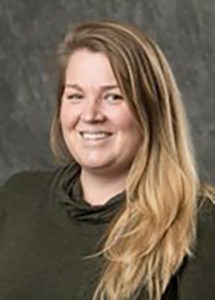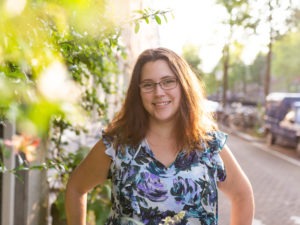Celebrating Jewish culture
The culture change movement has spurred activity professionals nationwide to seek a deeper understanding of the culture of residents they work with. Generally, culture refers to patterns of human activity and the symbolic structures of a society that give those activities significance. It also can be defined as all the behaviors, beliefs, and institutions of a population that are passed down from generation to generation. It is the way of life for an entire society. As such, it includes codes of manners, dress, language, religion, rituals, norms of behavior, (e.g., law and morality), and systems of belief.
For 15 years, I’ve worked at Shalom Park, a Jewish senior continuum of care community located in Aurora, Colorado. Although I am not Jewish, I have come to understand and admire Jewish culture and Jewish people. My experience with the culture comes from my research for Shalom Park, reading many reference books, searching the Internet, and receiving guidance from our staff rabbi.
As in any religion or culture, holiday observances vary. Local customs, religious background, and nationality affect how any holiday is observed. Whether or not you have Jewish residents, recognizing a Jewish holiday is an opportunity for an intellectual and educational program—plus some of the holidays are just plain fun!
In Morris N. Kertzer’s and Lawrence Hoffman’s book, What Is a Jew?, the following statement answers that question:
Judaism has been called “a civilization,” so that Jews are a cultural group, primarily religious, but not exclusively so, linked by a self-perception of enjoying a common history, a common language of prayer, a vast literature, folkways, and above all, a sense of common destiny. In this sense, Jews would be a people, not in the national or racial sense—but in feeling of oneness. Judaism is the people’s way of life.
Jewish holidays and traditions
Look at the holiday cycle of the five most-recognized holidays. In the fall, Jews observe Rosh Hashanah, also known as the “Jewish New Year.” Traditions include sending greeting cards with the wishes for a good year: May you be inscribed and sealed for a good year, or Shanah Tovah (Happy New Year). The shofar (ram’s horn) is blown during services. Symbolic foods include apples dipped in honey which convey wishes for a sweet and happy new year.
The next ten days, known as the Days of Awe, are a time of repentance in preparation for Yom Kippur, the most solemn of all Jewish holidays. It is spent in fasting, prayer services, and meditation.
The harvest holiday, Succot—or the “Jewish Thanksgiving”—follows Yom Kippur. It is also called “The Festival of Booths.” Temporary three-sided structures that allow the stars to shine through are set up in the backyard. Children love this holiday because they get to decorate the succah (hut or booth) with leaves, fruits, paper chains, lights, and just about anything they can think of. For a week, families eat, drink, and entertain in the booth.
Shemini Atzeret, a separate holiday, is considered the final days of the festive season. One custom is to recite a prayer for rain so that the land will be fertile and there will be plenty to eat. Services are held on this day. Simhat Torah, known as “Rejoicing in the Torah,” is a lively celebration in which the Torah is paraded around the synagogue seven times. Because a portion of the Torah is read each Sabbath, this holiday signifies that the Torah has been finished and it starts at the beginning.
Hanukkah is probably one of the most recognized of the Jewish holidays. Also known as the “Festival of Lights,” it is celebrated for eight days. Candles are lit each night and a new candle is added each day. This holiday is a great time for families; baking cookies, playing with a dreidel (a four-sided top), gifts are exchanged, music is enjoyed, and gelt (foil-covered chocolate coins) is given. In addition to the gelt, culinary delights include latkes (potato pancakes) served with sour cream and/or applesauce, jelly donuts.
In the spring, Purim is observed with much fun and foolishness. Basically it is the biblical story of Esther. The story (megillah) is read in the synagogue and it’s considered a mitzvah to hear the story. Traditions include giving of Shalakh Manot, (baskets of fruits, nuts, baked goods) and giving gifts to the poor. It is a wonderful time to hold a carnival, parade, or banquet. It truly is a time to “eat, drink, and be merry!”
Lastly is the most beloved of all Jewish holidays Passover, or Pesach, meaning to “pass over” or “spare.” The first major Jewish festival mentioned in the Old Testament, Passover commemorates the deliverance of the people of Israel from Egyptian bondage. The holiday is celebrated with family because of the importance of conveying the story and the meaning of Passover to the next generation. This is done on the first two nights at a festive ritual meal called a seder, which means “order.” It is replete with symbolic foods and rituals that set it apart from the rest of the year. Through this experience the Jews learn basic truths and strengthen family ties.
Incorporating Jewish culture into activities
Don’t overlook your Jewish residents when planning events. Many neighborhoods have a synagogue and members who will gladly share information with you or perhaps agree to come to your facility for a program.
There are many wonderful movies with a Jewish theme that all residents will enjoy. You might not have heard about Miracle at Midnight and The Devil’s Arithmetic. Older popular movies are Hello Dolly, Only the Lonely, Yentl, Fiddler on the Roof, Avalon, A Stranger Among Us, Jakob the Liar, and don’t forget the classic Ten Commandments and Exodus.
Purim is a good time to introduce your non-Jewish residents to the fun of the holiday. Residents can make masks to wear on the holiday. Decorate them with feathers, sequins, and ribbons. The Shalakh Manot tradition is another opportunity for a wonderful activity for residents to enjoy. Decorate bags with handles using stickers and markers. Have residents fill them with candies, fruit, cookies, and other treats to give to staff members. While working on this project, tell the story of Esther. Both of these projects work well with children for an intergenerational activity.
During Hanukkah, play dreidel using chocolate-covered coins, peanuts, or chips for “betting.” Explain what each of the symbols on the dreidel means. Part of the fun is just getting the top to spin!
Challenge your activity professional to bring the culture of other people to the residents. It is rewarding experience learning about our neighbors.
Brenda J. Scott, ADC, is Vice-President/Standards of Practice Trustee for the National Association of Activity Professionals and the Event Coordinator at Shalom Park in Centennial, Colorado. For more information, phone (303) 847-4370 or visit
To send your comments to the author and editors, e-mail scott0308@iadvanceseniorcare.com.
Recommended Reading
- Bank RD. The Everything Judaism Book. Cincinnati:Adams Media Corporation, 2002.
- Kertzer MN, Hoffman LA. What Is a Jew?: A Guide to the Beliefs, Traditions, and Practices of Judaism That Answers Questions for Both Jew and Non-Jew. New York:Touchstone, 1996.
- Kolatch AJ, The Jewish Book of Why. Middle Village, NY:Jonathan David Publishers, Inc., 1985.
- Kolatch AJ. The Second Jewish Book of Why. Middle Village, NY:Jonathan David Publishers, Inc., 1985.
- Telushkin J. Jewish Literacy: The Most Important Things to Know About the Jewish Religion, Its People, and Its History. New York:William Morrow & Company, Inc., 1991.
- Trepp L. A History of the Jewish Experience: Eternal Faith, Eternal People. Springfield, NJ:Behrman House revision 1973.
Sidebar
Editor’s Note: Every month members of the National Association of Activity Professionals (NAAP) will describe a program of particular interest and potential usefulness to readers.
Sidebar
The National Association of Activity Professionals (NAAP) was founded in 1982, and is the only national organization that exclusively represents Activity Professionals working primarily in geriatric settings. NAAP provides opportunities for professional development and personal growth through national and regional conferences that offer a variety of topics and numerous hours of education. NAAP has established partnerships with allied organizations, governing bodies, consumer groups, regulatory agencies, and provider groups. They continuously work toward uniform Standards of Practice for all Activity Professionals working with elders. For more information, contact the NAAP Office at (865)429-0717, e-mail thenaap@aol.com, or visit https://www.thenaap.com.
Sidebar
Common Jewish Terms
Bubbe is a term for grandmother.
Kashrut, or kosher, refers to the Jewish dietary laws, which basically prohibits meat and dairy products eaten together, pork, or shellfish.
Mitzvah means a religious obligation. It is also used to mean doing a good deed.
Shalom is the common greeting for hello, good-bye, or peace. The Sabbath is on Saturday but observance begins at sundown the night before as it does for all holidays.
Shabbat Shalom is the traditional Sabbath greeting.
Synagogue (services) are held both Friday night and Saturday.
The Torah consists of the first five books of the Old Testament.
Tzedakah means charity, an integral part of Judaism, and is expected at all times.
Yarmulke, or kippah, is a head covering worn by men. They also wear a prayer shawl, or tallit.
Sidebar
To learn more…
There is a wealth of information available about Judaism on the Internet. You can type “Judaism” in your search engine and get a long list of sites to visit, including:
Jewish Outreach Institute, https://www.joi.org/celbrate
Aish HaTorah, https://www.aish.com
Jewish Holidays on Line, https://www.jewish-holiday.com
I Advance Senior Care is the industry-leading source for practical, in-depth, business-building, and resident care information for owners, executives, administrators, and directors of nursing at assisted living communities, skilled nursing facilities, post-acute facilities, and continuing care retirement communities. The I Advance Senior Care editorial team and industry experts provide market analysis, strategic direction, policy commentary, clinical best-practices, business management, and technology breakthroughs.
I Advance Senior Care is part of the Institute for the Advancement of Senior Care and published by Plain-English Health Care.
Related Articles
Topics: Activities , Articles











